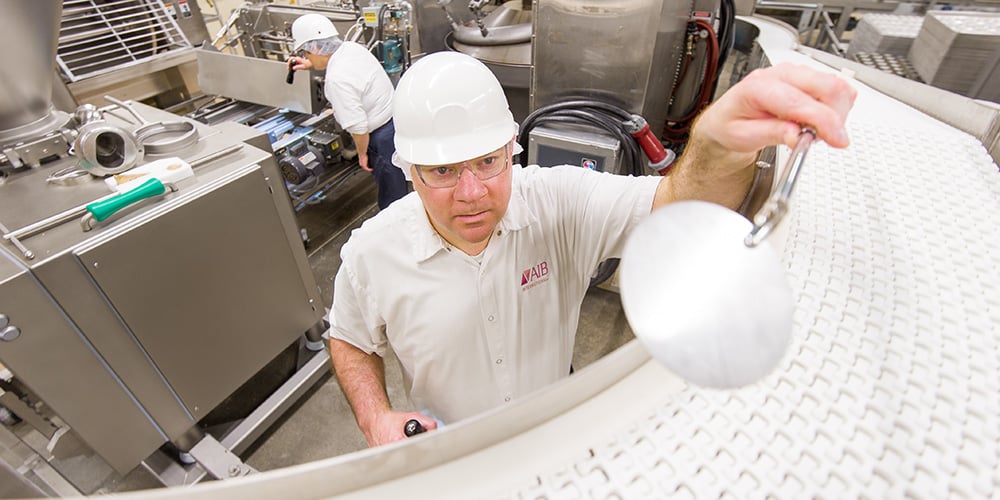The Importance of AIB Consolidated Standards for Food Safety Inspections
Food safety inspections are essential processes to ensure the consistency, quality, and security of food and beverage products and their manufacturers. In order to set a benchmark for those measures of inspection quality, organizations utilize consolidated standards to foster uniform practices that protect their customers.
Consolidated Food Safety Inspection Standards From AIB International
The AIB International Consolidated Standards for Inspection are a collection of requirements based on Good Manufacturing Practices (GMPs), regulatory requirements, and food safety practices typically used in food and beverage supply chain manufacturing facilities and food distribution centers. These standards were compiled to include the intent of many globally recognized requirements in a single document. This resource acts as a sort of food safety checklist that is easy to reference to provide a strong foundation for best practices and conditions in your facility. The scoring system we use provides a yardstick to measure how well a company performs against the standards and allows for tracking improvement year over year.
We developed our first Consolidated Standards for Inspection in 1956 to meet a need in the baking industry when bakeries wanted to better understand the expectations for food safety practices along with how they could measure improvement. The Consolidated Standards for Inspection were subsequently updated in 1978, 1985, 1990, 1995, 2000, 2008, 2012, 2016, and, most recently, 2022. Each update addressed new scientific knowledge, new regulations, and newly developed technologies and best practices that enhance food safety.
These standards were accepted by the food industry due to their unique way of integrating, in a user-friendly, easy-to-understand format, Good Manufacturing Practices (GMP), regulatory requirements, and food safety practices.
Updates to AIB Food Safety Inspection Standards
The latest updates to AIB Consolidated Standards include integrating new technologies used in Integrated Pest Management (IPM), addressing regulatory updates, and consolidating related requirements within the previous version of our Standards into a single requirement.
Additionally, the requirements for food safety plans were divided into two distinct standards for HACCP and HARPC, defining the requirements for each type of plan. The standard for food defense was also divided between regulated food defense in the U.S. and the global application of food defense, with specific guidelines for each. The programs and procedures previously found in categories 1 through 4 of the Standards were moved to category 5 — listed under the “Adequacy of Food Safety and Prerequisite” section — to consolidate programs into one category.
Using AIB Consolidated Standards
When you use the AIB International Consolidated Standards for Inspection, you provide your operation with a blueprint for your specific industry needs to meet regulatory and customer food safety expectations. Plus, when you use AIB food safety professionals to inspect your facility against these written standards, you get an unbiased evaluation as to how well your site is performing against the Standards.
Your food safety team can also use these standards when conducting your monthly self-inspections and provide a rating using our scoring system to measure performance. These standards are globally recognized and used by companies large and small to help them in their mission to provide their customers with safe food.
We have customized our standards for nine segments of the food supply chain because one size does not fit all industries. Each segment of the food supply chain has unique needs and considerations that have been used in the development of these Standards.
The Standards that have been updated for use started on January 1, 2023, and include those for Food Safety and Prerequisite Programs (Food Manufacturing), Beverage Facilities, Food Distribution Centers, Food Contact Packaging Manufacturing Facilities, and Nonfood Contact Packaging Manufacturing Facilities. The use of these updated Standards will help you enhance your operation’s food and product safety needs to meet regulatory and customer expectations.
Keeping Consistent With Food Safety Inspection Practices
Understanding and applying the revised AIB International Consolidated Food Safety Inspection Standards will be instrumental to your manufacturing business’s ability to deliver quality and healthy products to consumers. Take further steps to ensure your product integrity with expert inspection consulting from AIB and protect your operations from any issues.


